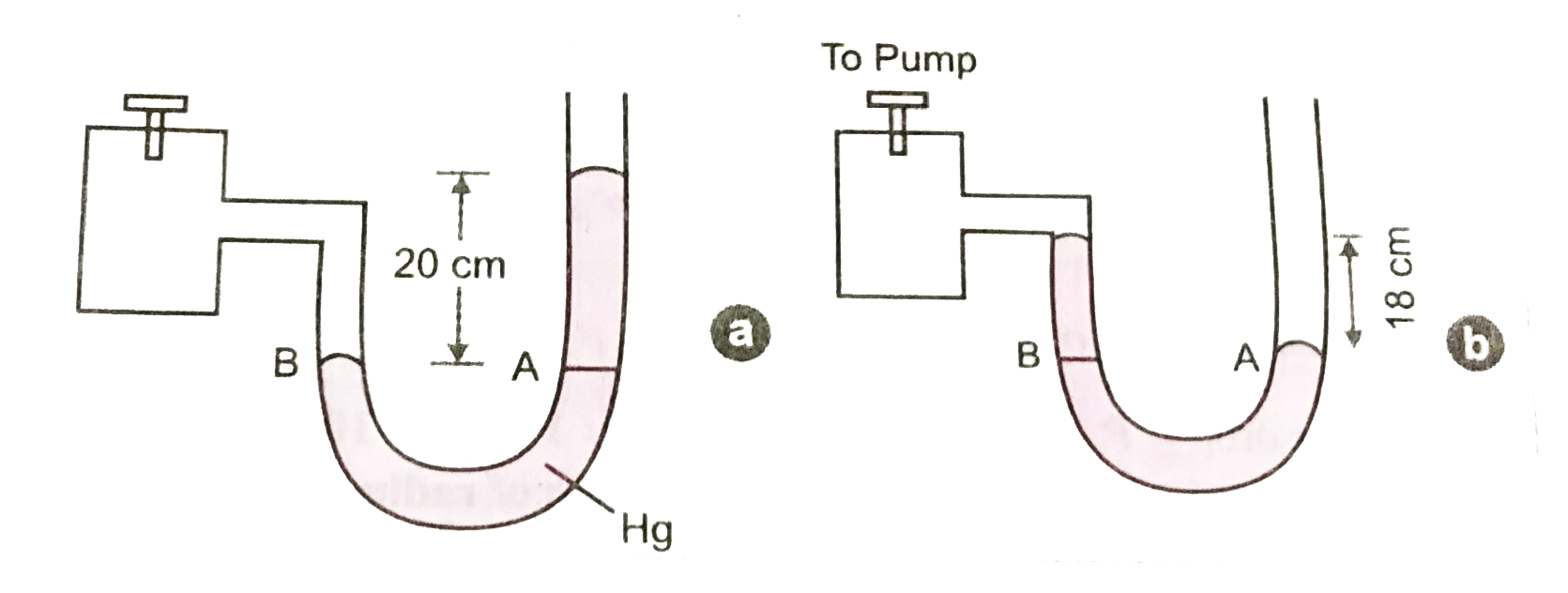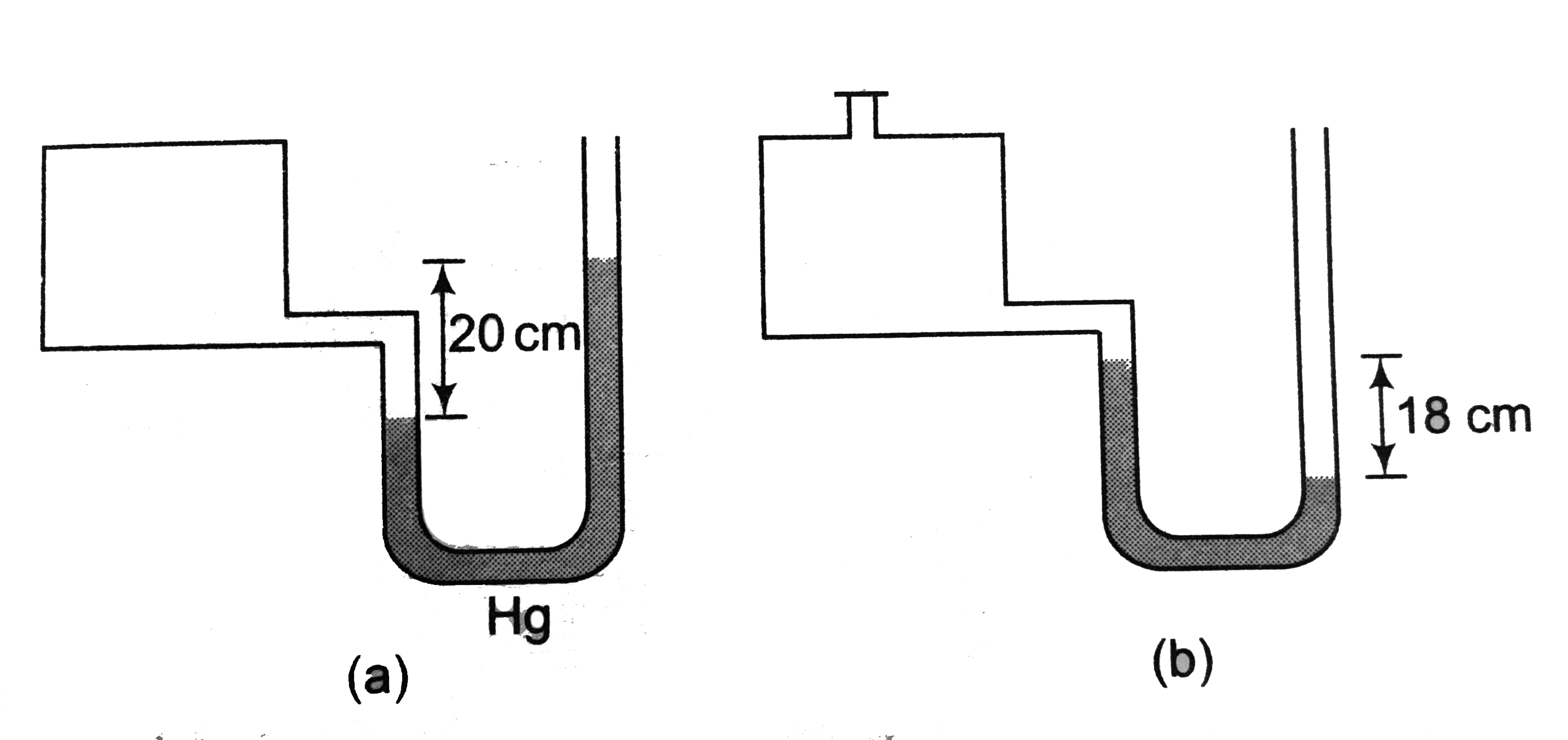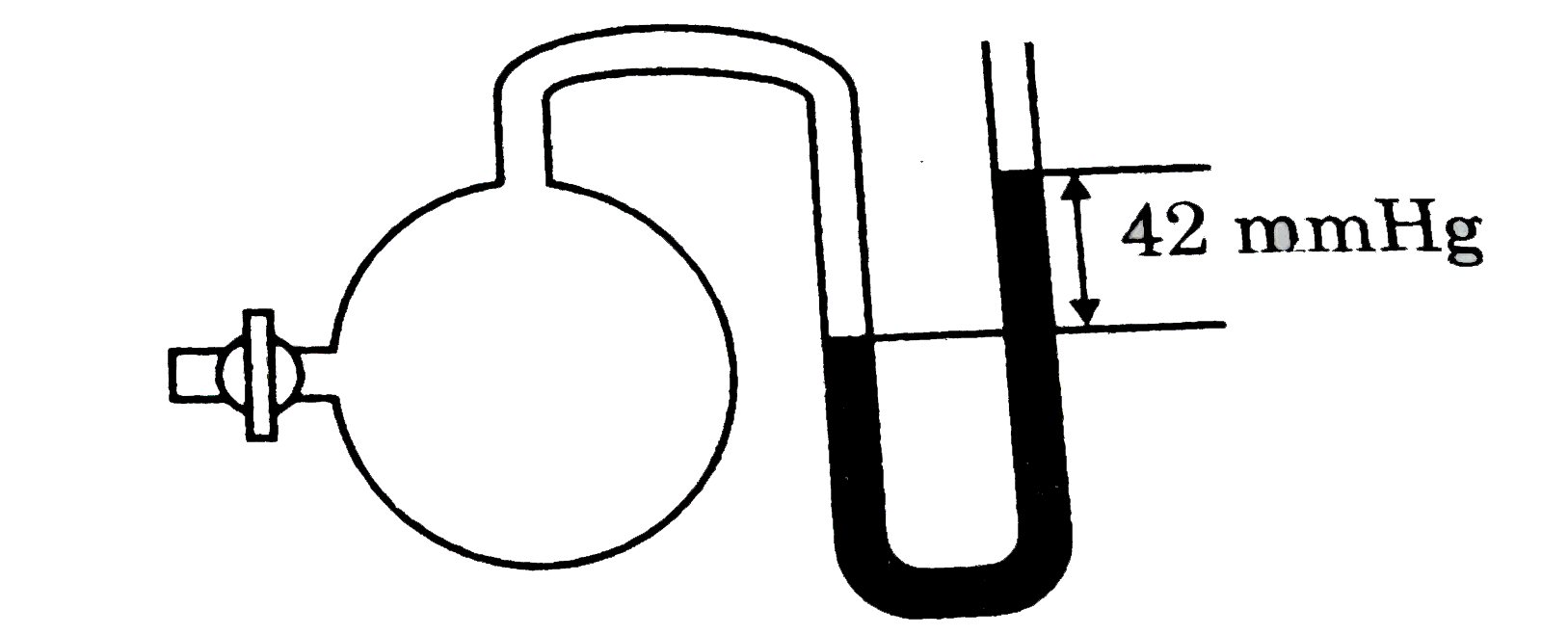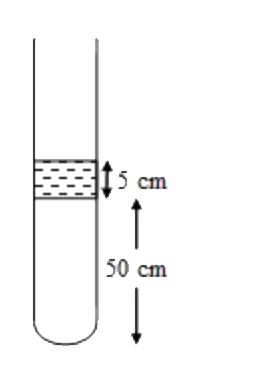A manometer reads the pressure of a gas in an enclosure as shown in the figure. The absolute and gauge pressure of the gas in cm of mercury is (take atmospheric pressure =76 cm of mercury)
76,20
20,76
96,20
20,96
The correct Answer is:C
To solve the problem regarding the pressure of a gas in an enclosure as measured by a manometer, we will follow these steps:
1. Identify Given Values:
- Atmospheric pressure (P₀) = 76 cm of mercury
- Height of the pressure head (H) = 20 cm of mercury
2. Calculate Absolute Pressure:
- The formula for absolute pressure (P) is given by:
P=P₀+H
- Substitute the known values into the formula:
P=76cm of mercury+20cm of mercury
- Perform the addition:
P=96cm of mercury
3. Calculate Gauge Pressure:
- The gauge pressure (P_g) is defined as the difference between the absolute pressure and the atmospheric pressure:
Pg=P−P₀
- Substitute the values:
Pg=96cm of mercury−76cm of mercury
- Perform the subtraction:
Pg=20cm of mercury
4. Final Results:
- Absolute Pressure = 96 cm of mercury
- Gauge Pressure = 20 cm of mercury
Summary of Results:
- Absolute Pressure: 96 cm of mercury
- Gauge Pressure: 20 cm of mercury
- Atmospheric pressure (P₀) = 76 cm of mercury
- Height of the pressure head (H) = 20 cm of mercury
- The formula for absolute pressure (P) is given by:
P=P₀+H
- Substitute the known values into the formula:
P=76cm of mercury+20cm of mercury
- Perform the addition:
P=96cm of mercury
- The gauge pressure (P_g) is defined as the difference between the absolute pressure and the atmospheric pressure:
Pg=P−P₀
- Substitute the values:
Pg=96cm of mercury−76cm of mercury
- Perform the subtraction:
Pg=20cm of mercury
- Absolute Pressure = 96 cm of mercury
- Gauge Pressure = 20 cm of mercury
- Absolute Pressure: 96 cm of mercury
- Gauge Pressure: 20 cm of mercury
Topper's Solved these Questions
- MECHANICAL PROPERTIES OF FLUIDSBOOK - NCERT FINGERTIPSCHAPTER - MECHANICAL PROPERTIES OF FLUIDSEXERCISE - Streamline Flow
7 Videos
- MECHANICAL PROPERTIES OF FLUIDSBOOK - NCERT FINGERTIPSCHAPTER - MECHANICAL PROPERTIES OF FLUIDSEXERCISE - Bernoulli'S Principle
15 Videos
- LAWS OF MOTIONBOOK - NCERT FINGERTIPSCHAPTER - LAWS OF MOTIONEXERCISE - Assertion And Reason
15 Videos
- MECHANICAL PROPERTIES OF SOLIDSBOOK - NCERT FINGERTIPSCHAPTER - MECHANICAL PROPERTIES OF SOLIDSEXERCISE - Assertion And Reason
15 Videos
Similar Questions
A manometer reads the pressure of a gas in an encloure as shown in fig. when some of the gas is removed by the pump, the manometer reads as in fig. the liquid used in mano-meters is mercury and the atmospheric pressure is 76 cm of mercury.
(i) Given the absolute and gauge pressure of the gas in the two cases (in units of cm. of mercury).
(ii) How would the levels change in case(b) if 13.6cm of water are poured into the right limb of manometer? (Ignore the change in volume of the gas).

View SolutionA manometer reads the pressure of a gas in a enclosure as shown in figure(a) When some of the gas is removed by a pump, the manometer reads as in (b). The liquid used in the manometers is mercury and the atmospheric pressure is 76cm of mercury.

(i) Give the absolute and gauge pressure of the gas in the enclosure for cases (a) and (b) in units of cm of mercury .
(ii) How would the level change in case (b) if 13.6cm of water are poured into the right limb of the manometer?
View Solution
Knowledge Check
A gas is collected in the flask shown here. What is the pressure exerted by the gas is the atmospheric pressure is 735 mmHg?
 A42mmHgB693mmHgC735mmHgD777mmHg
A42mmHgB693mmHgC735mmHgD777mmHgA vertical tube of length 100 cm contains a mercury pallet of length 5 cm as shown in the figure. The length of the tube above mercury pallet if the tube is inverted is nearly: (atmospheric pressure = 75 cm Hg of Hg)
 A56 cmB57 cmC60 cmD50 cm
A56 cmB57 cmC60 cmD50 cmThe height of mercury which exerts the same pressure as 20 cm of water column, is
A1.47 cmB14.8cmC148 cmDNone of these
Absolute Pressure And Gauge Pressure
View SolutionWhy mercury is used in barometer for measuring atmospheric pressure?
View SolutionA manometer is connected to a gas containing bulb. The open arm reads 43.7cm whereas the arm connected to the bulb reads 15.6cm. If the barometric pressure is 743mm mercury , calculate the pressure of the gas in bar?
Strategy : The pressure of the gas inside the bulb is greater than the external atmospheric pressure because the height of mercury column in the left arm is less than in the right arm.Therefore ,
pgas(in cm)=patom(in cm)+hcm
View SolutionA body can reduce the pressure in his lungs to 750 mm of mercury. Using a straw he can drink water from a glass upto the maximum depth of _____ cm
(atmospheric pressure = 760 mm of mercury, density of mercury =13.6gcm−3 )
View SolutionA barometer tube contains a mixture of air and saturated water vopour in the space above the mercury column. It reads 70cm when the actual atmospheric pressure is 76cm of mercury. The saturation vapour pressure at roon tempature is1.0 cm of mercury, The tube is now lowered in the reservoir till the space above the mercury cloumn is reduced to half its origina volume. Find the reading of the barometer. Assume that the temperature remains constant.
View Solution
